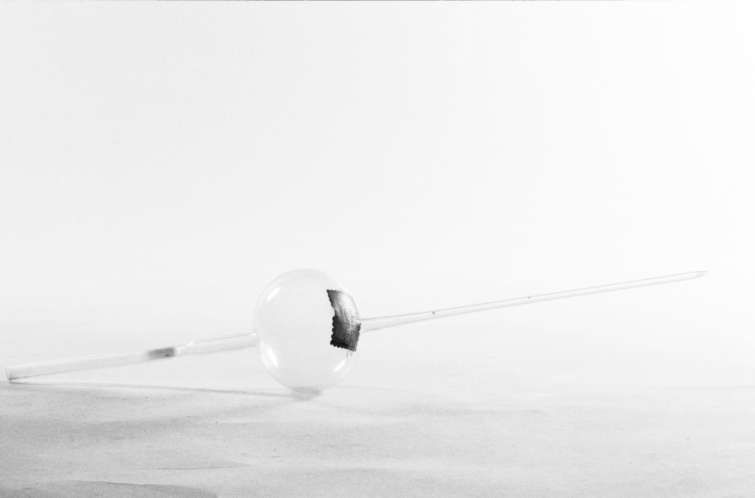
December 13, 2024
Bulletin interne de l'Institut Pasteur


Restoring laboratory glassware for the future Institut Pasteur museum
The permanent exhibition in the future museum will offer visitors a glimpse inside the Institut Pasteur's laboratories, from past to present. The museum team is working to restore scientific objects and instruments, some of which have never been presented to the public.
The museum team has rediscovered five Roux culture flasks, containers used to grow the microbiological culture medium invented by Émile Roux (1853-1933), seeded by Jean Binot (1867-1909), a laboratory head and close colleague of Émile Roux.
Jean Binot created the Institut Pasteur's first microbial collection in 1889 in connection with Émile Roux's microbiology course.

Portrait of Jean Binot (1867-1900), laboratory head and first curator of the microbial collection, c. 1900
Display case containing part of the microbial collections created by Jean Binot at the Institut Pasteur, c. 1900
Viviane Miceski, a conservation and restoration expert specializing in glass, Esther Jorel, a conservation and restoration expert specializing in organic materials, and Gabrielle Decrion-Lanta, a conservation and restoration expert specializing in graphic arts, have been working on this laboratory glassware dating from the late 19th century. Their tasks involve cleaning the glassware, stands and labels, esthetic restoration of the corks to improve the clarity of the objects, marking inventory numbers, and packaging the items before they go on display in the future museum.
Some of you had the opportunity to see their work during a visit in October.

Roux box with “Roux” inscription after restoration

Pasteur pipette with ball owned by Louis Pasteur, still unrestored
Watch the video to discover the restoration work on these objects
![]()
Glassblowers at Institut Pasteur
As part of the ongoing restoration project, Viviane Miceski contacted Christian Roujou, the last glassblower at the Institut Pasteur, who retired in 2017, to document the manufacture of the objects she works on. Below is a summary of their exchange.
The glass workshop, created shortly after the Second World War, was located in a small room on the 1st floor of the Duclaux building. It closed in December 2008.
Often mistakenly referred to as “ glassworkers ”, glassblowers made the glass objects used by scientists: swan-necked flasks, Pasteur pipettes, double-necked tapered flasks... He was also responsible for repairing existing equipment and making specific prototypes. Some scientists were able to take courses in their training to better understand what they could expect from the glass workshop, but technically, this training did not give them sufficient mastery to make a device. They could, however, use a Bunsen burner or a Mecker burner, the heating devices found on researchers' benches, to taper an ordinary glass tube capable of deforming at around 700°, in order to make Pasteur pipettes, for example.
The glass used from the 1960s-70s onwards was borosilicate (Pyrex). It had the advantage of being more resistant to temperature variations and chemical attack than the soda-lime glass previously used. Pyrex was worked with an oxhydric flashlight (a mixture of gas and oxygen) to ensure sufficient working temperature (2700°C).
Glassblower's work in the former glass workshop



